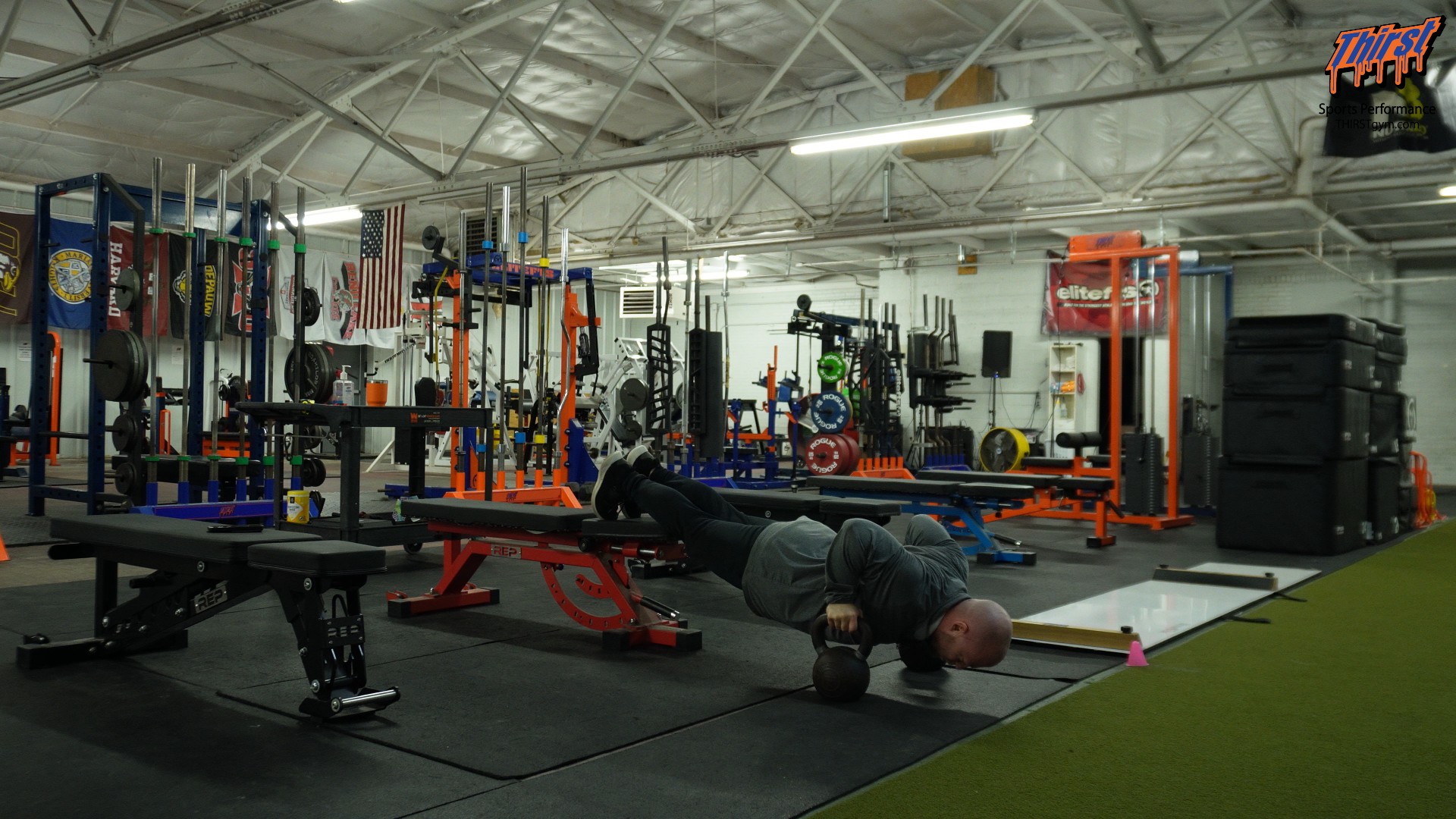Feet Elevated Deficit Push-Up: Maximize Your Upper Body Strength
Looking to take your push-up game to the next level? The feet elevated deficit push-up is an advanced variation that targets your chest, shoulders, and triceps with greater intensity than standard push-ups.
Watch the video below on how to maximize this exercise.
What Is a Feet Elevated Deficit Push-Up?
The feet elevated deficit push-up combines two challenging elements: an incline position with your feet raised above your head, and a deficit that allows for a deeper range of motion. This exercise effectively mimics an incline neutral-grip dumbbell bench press but uses your body weight for resistance.
Equipment Needed
To perform this exercise correctly, you’ll need:
- For the deficit: Two kettlebells, dumbbells, or sturdy blocks to elevate your hands
- For the incline: A bench, plyo box, couch, or any stable elevated surface for your feet
Proper Form and Technique
Follow these steps to perform the feet elevated deficit push-up with perfect form:
- Position two kettlebells or dumbbells shoulder-width apart
- Place your feet on an elevated surface (bench, box, etc.)
- Grip the kettlebells with your hands in a neutral position
- Lower your body between the kettlebells, creating a greater range of motion than a standard push-up
- Descend until your chest drops below your hands
- Push away from the ground forcefully
- At the top position, achieve quality protraction by pushing your shoulders forward
- Maintain a rigid body position throughout the movement
Benefits of Feet Elevated Deficit Push-Ups
1. Increased Range of Motion
The deficit created by elevating your hands on kettlebells or dumbbells allows for a deeper stretch at the bottom of the movement. This increased range of motion activates more muscle fibers and promotes better chest development.
2. Shoulder-Friendly Variation
The neutral grip position when using kettlebells makes this exercise particularly shoulder-friendly. You can achieve a deep stretch position without experiencing shoulder aggravation, making it suitable for those with minor shoulder issues.
3. Enhanced Tricep Engagement
The neutral grip and deficit position place greater emphasis on the triceps compared to standard push-ups. This makes the exercise excellent for tricep development while still targeting the chest and shoulders.
4. Scalable Difficulty
You can easily adjust the difficulty of this exercise by changing the height of your feet. A higher foot position increases shoulder engagement and overall difficulty, while a lower position shifts more focus to the chest.
5. Minimal Equipment Required
This exercise provides the benefits of an incline neutral-grip dumbbell bench press without needing access to a full gym setup – perfect for home workouts or when training with limited equipment.
Programming Recommendations
Before attempting this advanced variation, ensure you can perform standard push-ups with proper form. Once you’re ready to incorporate feet elevated deficit push-ups into your routine:
- As a primary pushing exercise: 2-4 sets of as many reps as possible (AMRAP)
- For progressive overload: If you can perform 15-20 reps per set, consider adding chains over your neck or back for additional resistance
- As a finisher: Incorporate at the end of your upper body training session to drive blood flow to the chest, shoulders, and triceps
Who Should Try This Exercise?
The feet elevated deficit push-up is ideal for:
- Intermediate to advanced fitness enthusiasts looking to progress beyond standard push-ups
- Athletes wanting to develop upper body pushing strength
- Home gym enthusiasts with limited equipment
- Anyone looking to target the chest, shoulders, and triceps in one efficient movement
Common Mistakes to Avoid
- Sagging hips: Maintain a straight line from head to heels
- Incomplete range of motion: Ensure your chest drops below your hands at the bottom position
- Elbow flaring: Keep elbows at approximately a 45-degree angle to your torso
- Neglecting protraction: Push away from the ground at the top of the movement
Final Thoughts
The feet elevated deficit push-up is a challenging but rewarding exercise that delivers significant upper body benefits. The intense range of motion and elevated foot position make it a movement you’ll definitely feel in your chest, shoulders, and triceps the next day.
Whether you use it as your primary pushing movement or as a finisher, this exercise is an excellent addition to any upper body training program. Try incorporating it into your next workout and experience the difference an increased range of motion can make!








